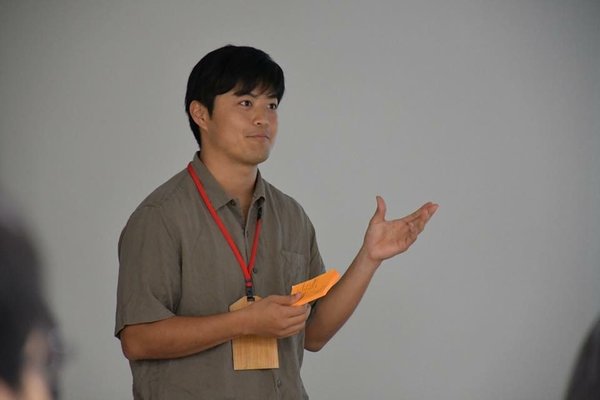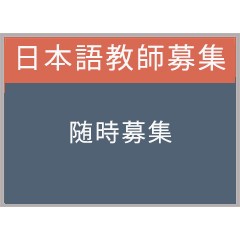Japanese Learning in Hong Kong
Native Japanese Tutor KUMANO

Native Japanese Teacher KUMANO
Japanese Teaching Experience Within 1 year
Native Language Japanese
Language Ability Intermediate in English, Elementary in Mandarin, Beginner in Cantonese
Born Kyoto – Japan
Teaching Area Central, Shueng Wan, Wanchai, Admiralty, TST, North point, Mong Kok, etc
Japanese Courses Provided by KUMANO
Hong Kong Native Japanese Tutor KUMANO
Hello everyone! My name is KUMANO, come from Kyoto, I’m a part time Japanese tutor. When I was a college student, I experienced two posts in American football team of my college. Captain and Coach. So I can teach according to a plan.
Language school was my main ways to learn Mandarin and English. Besides I was Personal Japanese Teacher of foreign friends with my motivation that I want more foreigners to understand Japan deeply. So I experienced and tried following two things.Education method of language school and method for improving at language in short term.
What is your purpose to learn Japanese? I will make a plan only for you and you will get a sense of achievement approaching your purpose every lesson!!
はじめまして!京都から来ました、KUMANOです!大学ではアメフトをしていました。そこでキャプテン、さらに、コーチとして、計画を立て、目標に向かって指導する経験をしました。
私はこれまで北京語(普通話)と英語を学んできました。語学学校へ通い、また、もっとたくさんの外国人に日本をより深く知ってもらいたいという動機の元、複数の外国人に対して個人的に日本語を教えました。そこで私は、語学学校の教育法短期間での上達方法の2つを学び、実践してきました。
あなたが日本語を学ぶ目的はなんですか?あなたがその目的に向かって日々進んでいる達成感を実感できるように、あなたのためだけの計画を作ります!
Private Japanese Lessons and Personalized Programs
基本的に教科書は用意しません。しかし、要望があれば使います。
ラップトップや紙媒体で教材を提示します。
必要に応じてノートを取ってもらいます。
I think teaching as a personal Japanese teacher is really great opportunity to transmit how I love Japan and Japanese to students.I’m possible to fit in with your schedule (whatever day), make a plan only for you, and teach Japanese in English or Chinese (only if you need).
In my lessons, we will often talk about Kyoto witch city I lived in. In Kyoto, we can find many kinds of Japanese cultures, foods, architectures, and etc. If you are interested in Japanese board games, we can play Shogi and Igo!! These are so interesting and strategic games.
You can not only learn Japanese, also you can understand Kyoto, Japanese culture, habits, and games in my lessons!!!
Japanese Teaching Approach
1. Greeting
2. Hiragana & Katakana, Japanese character
3. Pronunciation
4. Conversation, grammar
Greeting is most important, so it comes first.
We understand output is important, and we also understand input is equally important. In addition, we understand if we want to learn language, We have to memorize many words and sentences, so I will bring many examples on laptop or paper.
We constantly do output depending on your knowledge. I will ask a question or we talk in a situation ,etc. Because output is fun, retain your motivation, and it’s necessary to learn languages.
Learning is repeating input and output.
Ask KUMANO Teacher Japanese Learning Questions
I was a personal Japanese teacher of foreign friends. Chinese, Hong Konger, Taiwanese, French, Iranian, Mexican
Some of them are Beginner and some of them have already studied Japanese.I succeeded to improve their pronunciation, teach new phrases and be recited Hiragana & Katakana in short term.Even though I don’t have a qualification.
KUMANO先生へ「分かりました」と「了解しました」と「かしこまりました」と「承知しました」と「了承しました」の違いについて教えていただけないでしょうか?
KUMANO先生’s Answer:
どのセンテンスも「分かった」を意味する丁寧な表現です。ビジネスの場面ではよく耳にするものたちです。
これらの違いは目上の人、つまり上司や社長に対して、使えるかどうかの違いです。日本人の中にも知らない人がいるので、知っていると、オッ!と感心されるかも!
○上司に使える
「かしこまりました」「承知しました」
「分かりました」も使えるが、上の2つのほうが良い。
×上司に使えない
「了解しました」「了承しました」
これらは同僚や部下にのみ使えます。
KUMANO先生へ「それでは」と「じゃあ」の違いについて教えていただけないでしょうか?
KUMANO先生’s Answer:
「それでは」も「じゃあ」も、文の頭にくることが多いです。その場合、なにかを開始することを相手に促す(うながす)時に使えます。
例) それでは、会議を始めます。
じゃあ、練習を始めよう。
「それでは」の方がビジネスなど固い、まじめな場面で使うことが多いです。
「じゃあ」は、友達との会話など気楽な場面で使います。ビジネスの場面では使わないほうが良いです。
KUMANO先生へ 「今」と「現在」と「今の所」の違いについて説明してくれませんか?
KUMANO先生’s Answer:
「今」と「現在」はどちらも同じ意味です。
違いは、「今」は話し言葉、「現在」は書き言葉で使われることが多いです。
例) 今、着いたよ。
現在、仕事中です。
「今の所」も今・現在までの状況を説明する時に使う単語ですが、「未来は状況が変わっているかもしれない」という可能性を含ませた単語です。
例) 今の所、問題ありません。(これまで問題はないが、未来は問題が起きているかもしれない。)
Ask KUMANO Teacher Japanese Culture Questions
感謝
日本人は食事の前と後にある言葉をいいます。
それらの言葉は感謝を意味します。その食べ物に対してのみに限らず、食べ物を育ててくれた人、加工してくれた人、運んでくれた人、売ってくれた人、調理してくれた人たちに対しても感謝を示します。それが「いただきます」と「ごちそうさま」です。日本人は古くから周りのあらゆるものに対して感謝をしてきました。だからもちろん、あなたにも感謝しています。私のプロフィールを見てくれてありがとう!


Stay in Touch
RSS
Facebook
Twitter
Google +1